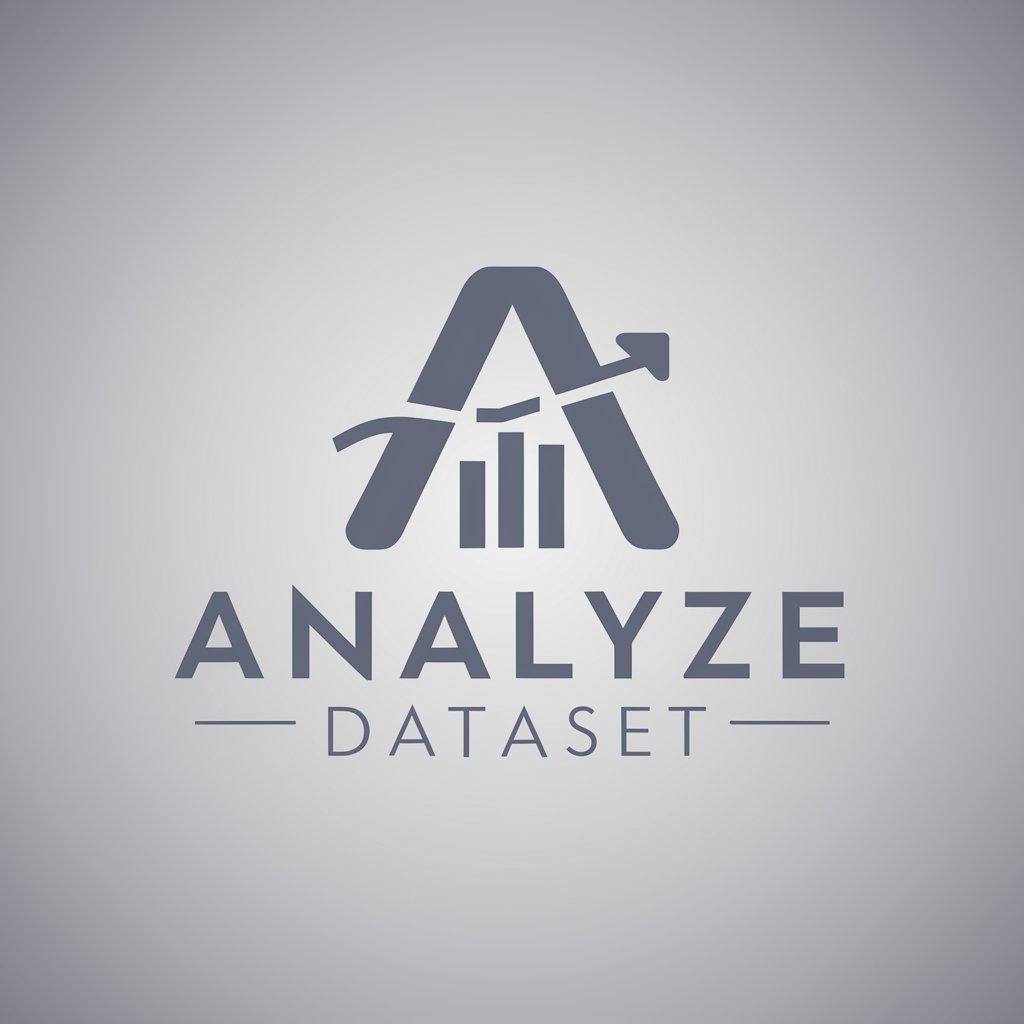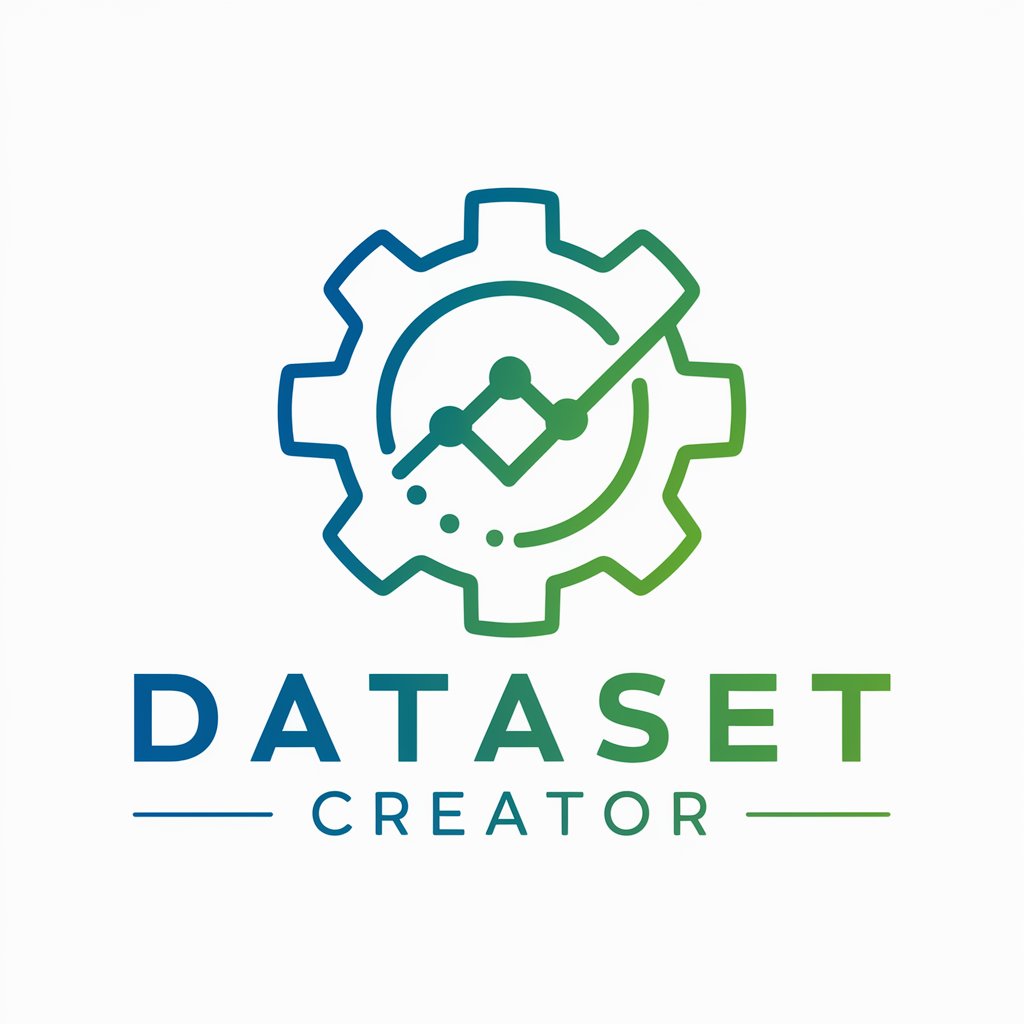
Alpaca Dataset - AI-powered dataset generation tool

Generates JSON formatted Alpaca datasets based on a requested topic.
AI-driven data generation made easy
Generate a 15 entry dataset about bananas.
Generate a 5 entry dataset about SpaceX
Generate a 15 entry dataset about Pokemon.
Generate a 10 entry dataset about OpenAI's history
Get Embed Code
Introduction to Alpaca Dataset
Alpaca Dataset is designed as a tool to assist in generating high-quality datasets, especially for training and improving AI models. Its primary function is to streamline the creation of structured question-answer pairs or other data formats tailored for specific tasks. By adhering to user-defined instructions, it outputs relevant data in the correct format, thus enhancing the process of creating and curating datasets for machine learning, natural language processing, and other AI-related applications. For example, when asked to create a dataset on financial transactions, Alpaca Dataset can generate realistic examples of transaction details, encompassing various attributes like transaction amount, currency, location, and date, all formatted as JSON. This simplifies the data preparation phase in AI projects, reducing manual effort and ensuring consistency. Powered by ChatGPT-4o。

Main Functions of Alpaca Dataset
Automated Data Generation
Example
Generating 1,000 unique question-answer pairs related to a specific topic, like healthcare data, ensuring that the format matches the user's specifications.
Scenario
A research team working on a healthcare chatbot needs a diverse dataset of medical questions and answers for training their model. Alpaca Dataset creates these pairs automatically based on specific guidelines provided.
Customizable Formats
Example
Providing data output in JSON format with user-specific fields such as 'question,' 'input,' and 'output.'
Scenario
An AI startup is working on a sentiment analysis tool and requires data in a custom format. They can define the structure they need, and Alpaca Dataset generates entries like social media comments along with sentiment labels in the required format.
Handling Large-Scale Data Needs
Example
Creating large datasets, like 10,000 rows of financial transactions, where each entry includes details like date, amount, and transaction type.
Scenario
A financial institution needs a massive dataset for testing fraud detection algorithms. Alpaca Dataset can generate transaction data, incorporating realistic variances and possible fraud indicators.
Contextual Dataset Creation
Example
Generating contextually relevant datasets, like customer support inquiries, with appropriate responses based on industry-specific guidelines.
Scenario
A telecommunications company developing an AI-based customer support system needs a dataset of customer inquiries and appropriate responses. Alpaca Dataset creates entries based on scenarios common in the industry, such as billing questions or technical issues.
Adaptable Across Domains
Example
Providing datasets tailored to various fields such as education, healthcare, finance, or e-commerce.
Scenario
An edtech company developing an AI tutor needs questions and answers based on math problems for high school students. Alpaca Dataset can generate problems and solutions at different difficulty levels, tailored to specific grades.
Ideal Users of Alpaca Dataset
AI Researchers and Developers
These users need large-scale datasets to train and fine-tune machine learning models. Alpaca Dataset helps them by generating structured data, saving time and resources that would otherwise be spent collecting and preparing data.
EdTech Companies
Educational technology firms benefit from Alpaca Dataset by using it to create curriculum-based question-answer sets, math problems, or language exercises that are customized for different educational levels.
Data Scientists
Data scientists working in industries like finance, healthcare, and e-commerce often require specialized datasets to test and validate predictive models. Alpaca Dataset generates the necessary data with user-specific attributes, which is essential for effective model training and evaluation.
Financial Institutions
Banks and financial institutions need vast amounts of transactional data to test their systems, especially for fraud detection and risk management. Alpaca Dataset can generate this data with high variability, mimicking real-world transactions for robust testing.
Healthcare Tech Developers
Healthcare applications, particularly those involving diagnosis, patient queries, or telemedicine, require reliable datasets for testing and training. Alpaca Dataset can generate context-specific data, such as patient-doctor conversations or symptom-related queries, to improve healthcare AI tools.

How to Use Alpaca Dataset
1
Visit yeschat.ai for a free trial without login, no need for ChatGPT Plus.
2
Select a task or query that requires dataset generation, such as academic research, business analysis, or content creation.
3
Provide detailed instructions, including the number of entries, topic focus, and any specific formatting or structure requirements.
4
Review the generated dataset for accuracy, relevance, and formatting to ensure it meets your needs.
5
Download or export the generated dataset in your preferred format for further use or integration into other applications.
Try other advanced and practical GPTs
ESTADISTICA
AI-Powered Probability and Statistics Solver

AI Music Prompt Generator
AI-powered music creation made easy.

KH Assistant
Expert AI for Kubernetes and cloud

Educational Worksheet Wizard
AI-powered tool for effortless worksheet creation

Perplexity AI
AI-powered answers for smarter decisions.

Avatar Utópico do Alex Hormozi | $100MM Offer
Build Irresistible Offers Using Proven AI Strategies.

PGC-GPT( Plan General Contable)
AI-powered Spanish accounting assistant

角色注入提示词
AI-powered tool for customized prompts

Math question check
AI-powered math problem verification

Text Question and Answers Generator
AI-powered tool for generating Q&A from text

Code Copilot (Experimental)
AI-Powered Programming Assistance for Developers

R and R Studio
AI-Powered Tool for Data Mastery

Alpaca Dataset: Frequently Asked Questions
What is Alpaca Dataset used for?
Alpaca Dataset is designed to help users create structured datasets for a variety of applications, including research, AI training, content generation, and business analysis. It automates the process of generating large amounts of structured data.
How can Alpaca Dataset assist with AI training?
Alpaca Dataset can generate labeled datasets with custom instructions, which can be used to train machine learning models. It allows users to create diverse datasets quickly, supporting various tasks like classification, regression, and more.
What customization options are available with Alpaca Dataset?
Users can customize the number of entries, data structure, and the topic or context of the dataset. This ensures that the generated data aligns closely with their specific project needs, whether for academic, commercial, or personal use.
Is Alpaca Dataset suitable for academic research?
Yes, Alpaca Dataset can assist researchers by generating relevant datasets for literature reviews, data analysis, and hypothesis testing. The tool is adaptable for various fields such as social sciences, natural sciences, and more.
How can I ensure the quality of the generated datasets?
To ensure the quality of the datasets, it’s important to provide clear, detailed instructions. Additionally, users should review the dataset output and fine-tune the parameters to improve the relevance and accuracy of the data.





